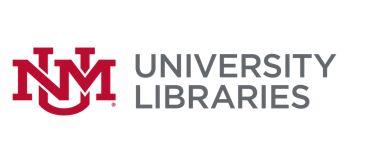WASHINGTON — U.S. Senator Tom Udall , vice chairman of the Senate Committee on Indian Affairs, led an oversight hearing entitled “Examining Efforts to Maintain and Revitalize Native Languages for Future Generations.” During the hearing, Udall secured a commitment from Administration for Native Americans (ANA) Commissioner Jeannie Hovland to support the Esther Martinez Immersion program, which Udall has championed for over a decade spanning back to his time in the House of Representatives.
The Esther Martinez program provides funding for community-based projects that aim to revive Native languages through immersion-based education and resources. Udall is the sponsor of S. 254, the Esther Martinez Native American Languages Preservation Act, which would reauthorize the program through FY2023 and make the program more accessible to smaller tribal communities.
Vice Chairwoman of the Mashpee Wampanoag Tribe Jessie Baird noted the importance of the Esther Martinez program to her Tribal community. “The ANA language funding and the Esther Martinez Native American Languages Protection Act have made possible our ability to develop a core team of fluent speakers and certified teachers who in turn have developed curriculum for a myriad of language programs and services to meet the needs of our nation,” Baird stated.
Udall’s opening statement as prepared for delivery is below:
Thank you, Chairman Hoeven, for working with me to call today’s hearing on Native languages. Native language revitalization has been a longtime priority for me, and I appreciate your working with me to highlight this issue.
Before I begin, I would like to welcome Dr. Christine Sims of the University of New Mexico.
Dr. Sims is a member of the Acoma Pueblo in New Mexico, and a leader in Native languages revitalization. Thank you, Dr. Sims, for being here today, and thank you for your important work.
I would also like to welcome Administration for Native Americans Commissioner Jeannie Hovland to her first hearing before the Committee. I look forward to hearing your plans for your term as Commissioner.
Native languages are not only crucial to the communities that speak them, but they have played an important also role in our shared American history.
One notable example is the Navajo Code Talkers of World War Two. The Navajo recruits who arrived at Camp Pendleton were tasked with developing a secret code using their Native language.
Without using any modern technology, Code Talkers were able to develop and implement a secret code -- that is attributed to saving countless lives of Allied troops and civilians and securing our victory in the Pacific.
Today, in my own home state of New Mexico, 23 Pueblos and Tribes speak 7 major Native languages -- each different and distinct and reflecting the beauty of diversity of New Mexico itself.
The diversity of Native languages in New Mexico is a microcosm of the vast diversity of languages throughout Indian Country.
There are an estimated 200 Native languages currently spoken in the United States. Some others have gone extinct but are waiting to be brought back again. They all represent some of the greatest linguistic diversity in the world, coming from at least 29 different language families – and each serves irreplaceable role for its community of speakers.
The revitalization of Native languages is crucial to the cultural identity and sovereignty of Native communities throughout Indian Country.
Today’s hearing is a chance for us to highlight the diversity of Native languages that exist, and to ensure federal resources are supporting all aspects of Native language revival and preservation needs.
Our witnesses here today represent this diversity and reflect the unique needs of four Native communities on their paths to language revitalization and maintenance.
The Cherokee language, the Hawaiian language, the Wampanoag language, and the Keres language -- each of these languages is unique – and requires individualized resources, curriculum, and training to support revitalization efforts.
According to the United Nations Educational, Scientific and Cultural Organization, 74 Native languages will disappear within the next decade if we don’t take significant action.
This is why programs like the Esther Martinez Immersion grants -- which I have supported throughout my service in both the House and Senate -- are so vital.
The Esther Martinez Program has helped revitalize 58 different Native languages, assisting over 4,500 elders to preserve languages and over 12,000 youth to maintain Native languages for future generations.
The success of this program is why I have sponsored S. 254, the Esther Martinez Native American Language Preservation Act, that would reauthorize the program until FY 2023.
Native languages hold within them the culture, the history, and the resiliency of Native communities throughout Indian Country.
My hope is that today’s hearing is an important step among many to support the revitalization of Native languages for all Native communities.
Thank you to the panel for your valued work, and I look forward to hearing your testimony.
Thank you, Mr. Chairman.

